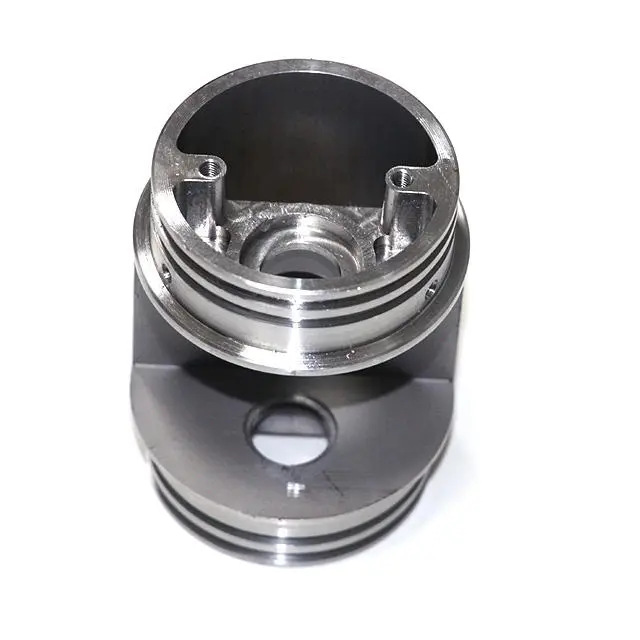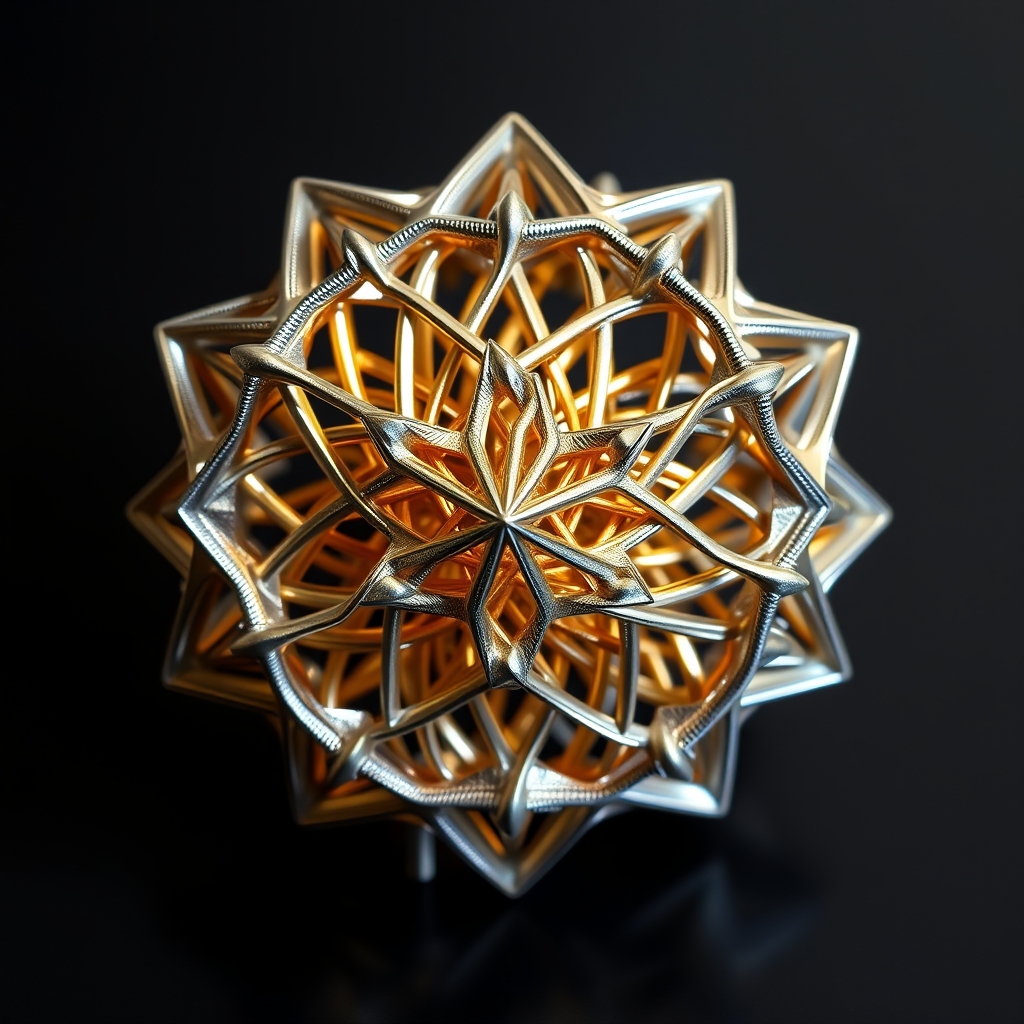
- +8615586668226
- [email protected]
- No. 30, Hongbang Industrial Park, Shenzhen

Selective Laser Melting (SLM) is a powder bed fusion technique within the realm of additive manufacturing. It’s a process that uses a high-powered laser to fully melt and fuse metallic powders, layer by layer, creating complex and high-density 3D objects.
Think of it like building with incredibly fine, high-tech LEGOs. Each layer of powder is spread, and the laser precisely melts the areas needed for that specific layer, solidifying the metal. This process repeats, layer upon layer, until the final product is complete. Unlike traditional manufacturing, which often involves cutting away material (subtractive manufacturing), SLM adds material, hence the term “additive manufacturing.” SLM can produce components of a variety of materials including metals, ceramics, and polymers, while other additive manufacturing techniques like LMD, WAAM, and EBM are only suitable for printing metallic materials.
Traditionally, SLM has been limited to printing a single material in each layer. This is akin to being restricted to only one color of LEGOs for an entire structure. However, many applications across aerospace and aviation, medical devices, and other high-tech industries require components made of multiple materials. Imagine an artificial joint that is metal for some areas, but with a ceramic coating in others.
The ability to print multiple materials in a single build opens up a world of possibilities. It allows for the creation of functionally graded materials, where properties gradually change across the object. This is crucial for components needing different characteristics in different areas, such as varying levels of hardness, heat resistance, or conductivity. This is particularly important in aerospace components, medical implants, and industrial equipment dies and molds. As an experienced CNC manufacturing service product manufacturing factory, we are at the forefront of implementing these advances.
The innovation lies in the sophisticated integration of traditional powder-bed spreading with a novel point-by-point, multi-nozzle, ultrasonic dry powder delivery system. To simplify this, imagine a system that can both spread a base layer of powder like traditional SLM and then precisely deposit different types of powder exactly where they’re needed using ultrasonic vibrations.
This is achieved through a specially designed system. First, a roller spreads the main building material (e.g., 316L stainless steel). Then, a micro-vacuum system selectively removes powder in specific areas. Finally, ultrasonic dispensers deposit other materials (e.g., In718 nickel alloy or Cu10Sn copper alloy) into these precise locations. The laser then fuses these materials, creating a multi-material layer. This process repeats, building the complex, multi-material component layer by layer. We at CNC Fabrication are always looking to provide the most advanced CNC solutions.
The multi-material SLM system described in the PDF is a marvel of engineering. It features an x-y-z galvo scanner for precise laser control, a powerful fiber laser, and a multi-powder delivery system. The powder delivery system is where the magic happens, combining a roller-assisted powder bed mechanism with a micro-vacuum selective material removal system and multiple ultrasonic dry powder dispensers.
This sophisticated setup allows for precise control over the placement of different materials. The system operates in an inert gas environment to prevent oxidation, ensuring the quality of the final product. All these components work in harmony to deliver high-quality, multi-material parts. A fume exaction system was built into the system to remove fumes generated. Although the system had a built-in pre-heating facility, this was not used in the present investigation. A schematic diagram of the experimental set up is shown in Fig. 1 of the document.
The study focused on three primary materials: 316L stainless steel, In718 nickel alloy, and Cu10Sn copper alloy. These materials were selected for their relevance to various industries, including aerospace, automotive, and medical devices.
The use of these specific materials demonstrates the versatility of the multi-material SLM process and its potential for creating high-performance components for demanding applications. As a leading provider of fabrication services, we understand the importance of material selection for optimal product performance.
The core difference lies in the ability to deposit and fuse multiple materials within a single layer and across different layers. Conventional SLM is limited to one material per layer, while the new process allows for intricate combinations of materials within the same layer.
This is achieved through the selective powder removal and point-by-point deposition system. Instead of simply spreading a single layer of powder, the new process selectively removes powder in specific areas and then deposits different materials into those areas before laser fusion. This creates a seamless transition between materials, enabling the creation of functionally graded components. This capability is crucial for industries like robotics and consumer products, where complex parts with varying material properties are increasingly in demand.
While the multi-material SLM process is a significant advancement, it does present some challenges. One is the potential for porosity and cracks in areas where ultrasonic powder deposition is used. This is due to the uneven surface and lower packing density of ultrasonically deposited powder compared to roller-spread powder.
Another challenge is ensuring proper bonding and elemental diffusion between different materials. The study found that the special “finger cross” joint structure design helped achieve good bonding and diffusion. However, optimizing these parameters for different material combinations requires further research. Managing the complexity of support structures for intricate multi-material parts and recycling unused powders are also areas for ongoing development.
| Challenge | Description | Potential Solution |
|---|---|---|
| Porosity in ultrasonically deposited areas | Uneven powder surface and lower packing density lead to higher porosity. | Optimizing ultrasonic deposition parameters, potentially using post-processing techniques like hot isostatic pressing. |
| Inter-material bonding | Ensuring proper bonding and elemental diffusion between different materials can be complex. | Optimizing joint design, laser parameters, and potentially using intermediate materials to promote bonding. |
| Support structure complexity | Designing support structures for complex multi-material parts can be challenging. | Developing advanced algorithms for automated support structure generation tailored to multi-material parts. |
| Material recycling | Recycling unused powders of different materials can be complex. | Developing systems for efficient separation and recycling of different powder materials. |
The applications of this technology are vast and span across numerous industries, such as aerospace and defense, where it can be used to create lightweight, high-strength components with tailored properties. In the medical devices industry, it can be used to create implants and prosthetics with customized biocompatibility and mechanical properties. The automotive industry can benefit from lighter and more efficient components.
Other potential applications include:
The ability to tailor material properties at specific locations within a component opens up new design possibilities and can lead to significant performance improvements. It can also be used in packaging and pharmaceuticals.
Multi-material 3D printing is poised to revolutionize manufacturing by enabling the creation of complex, high-performance components that were previously impossible to produce. It allows for greater design freedom, improved material utilization, and streamlined production processes.
This technology empowers engineers and designers to think outside the box and create innovative solutions that were previously unimaginable. It also has the potential to reduce lead times, lower production costs, and enhance product customization. For example, creating custom tools and molds with specific material properties in different areas. As a forward-thinking CNC manufacturing service and product manufacturing factory, we’re committed to leveraging this technology to deliver cutting-edge solutions to our clients. Our CNC machining services can greatly benefit from this technology.
As a leading CNC manufacturing service and product manufacturing factory, we play a crucial role in bridging the gap between this groundbreaking technology and its practical application. We have the expertise and resources to help businesses integrate multi-material 3D printing into their production processes.
We offer a range of services, including:
Our goal is to empower our clients to leverage the full potential of this transformative technology. We are your one-stop solution for rapid prototyping and on-demand manufacturing.
What is the maximum size of parts that can be produced using this multi-material SLM process?
The maximum part size depends on the specific SLM machine being used. However, the system described in the study used substrate plates of 120 mm in diameter, suggesting that parts of comparable size can be produced.
Can this process be used to print ceramics and polymers in addition to metals?
Yes, the technology has the potential to print metal-ceramic-polymer components, although the study focused primarily on metallic materials. Further research is needed to optimize the process for non-metallic materials.
How does the cost of multi-material 3D printing compare to traditional manufacturing methods?
The cost of multi-material 3D printing can vary depending on factors such as part complexity, materials used, and production volume. In some cases, it may be more cost-effective than traditional methods, especially for complex, low-volume parts. It is best to do a cost analysis for each specific case, and you can contact us for more specific information.
What is the lead time for producing a multi-material part using this process?
The lead time depends on factors such as part complexity, size, and the number of different materials involved. However, 3D printing generally offers faster lead times compared to traditional manufacturing methods, especially for complex parts.
Is this technology suitable for mass production?
While multi-material 3D printing is well-suited for prototyping and low-volume production, its suitability for mass production depends on various factors, including part size, complexity, and material requirements. Ongoing research and development efforts are aimed at making the technology more scalable for mass production. Contact us today to discuss your project.
What kind of surface finishes are possible with this process?
The initial surface finish of parts produced using SLM can be somewhat rough. However, various surface finishing techniques, such as media blasting, vibratory finishing, and electro-polishing, can be used to achieve the desired surface quality. The choice of finishing method depends on the specific material and application requirements.

Ready to explore the possibilities of multi-material 3D printing for your next project? Contact us today to learn more about how our expertise and cutting-edge technology can help you achieve your manufacturing goals. You can find more information on our CNC Solutions and Materials pages. We also offer specialized Assembly services. You can also find out about our Aerospace and Electronics industry solutions.
Get the latest trends and facts about CNC fabrication from our blog.
Shenzhen Runkey Precision Technology Co. Ltd, a subsidiary of the Tensun Group, is your trusted one-stop solution for custom manufacturing from prototyping to production.Transforming your idea into reality with digital manufacturing resources,streamlined processes, expert guidance,accelerated timelines, and uncompromising quality.
©2024. CNC Fabrication All Rights Reserved.